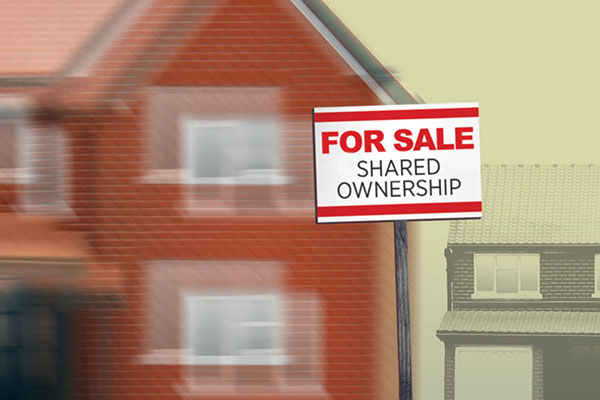Shaking up shared ownership
Shared ownership looks set to get a reboot, as the housing secretary sets out plans to make it a more attractive option for buyers. Lucie Heath finds out more. Illustration by Getty
Much has been made of the fact that Robert Jenrick, the new housing secretary, is the first member of cabinet to have been born in the 1980s. Not only does this make Mr Jenrick the first millennial cabinet minister, it also makes him the first to be born after the Housing Act 1980 – the defining piece of legislation that ushered in the Right to Buy.
But in addition to introducing the Right to Buy, it was the piece of legislation which established the right to staircase, giving people the option to incrementally increase their share in a property, and paving the way for shared ownership to be established nationally.
“If the sector was to work together to implement this and the government got behind it, there’s a real opportunity for us to get a quick win”
Kush Rawal, director of residential investment, MTVH
Since this introduction, shared ownership has existed largely outside the mainstream, equating to a small percentage of all housing stock. That was until 2015 when the then-chancellor George Osborne announced £4.1bn would be allocated to building 135,000 shared ownership homes.
Since then the numbers being built have grown. National Housing Federation (NHF) figures for affordable ownership starts, which include other tenures but primarily represents shared ownership, have shown a 65% increase from 10,221 starts in 2015/16 to 16,844 starts in 2018/19.
But despite its growing popularity there still are issues such as difficulties in staircasing and complexities around securing mortgages, which some claim have held people back from taking the shared ownership leap.
Last week, the new housing secretary set out plans to address these issues and create a national model aimed at helping “a new generation of people to own their own home”.
Here we dive into the proposals and assess whether the government will achieve its aims.
The part of the government’s announcement that grabbed the headlines was the proposal to reduce the increments in which households can staircase towards homeownership from 10% to 1%.
Currently, shared owners are allowed to increase their share of a home only in 10% chunks. According to the government’s analysis, this means a family that owns a 25% stake in a £200,000 home with a £50,000 mortgage has to save £15,000 before they can staircase.
Under the proposed changes, that same family would have to save just £2,000 to increase their stake.
Some believe that while 1% staircasing sounds great in theory, the difficulty could be in the implementation.
Sue Shirt, executive director of customer experience at Stonewater, explains: “My initial thoughts were: if we’re going to reduce the percentage equity that people can purchase, how is that going to impact on costs, both for the association and customers?”
According to Ms Shirt, it usually costs a shared owner around £1,000, mostly in legal and valuation fees, each time they wish to staircase.
The government is looking for ways to bypass additional costs. One proposal is to “utilise the latest technology” to make investing in a home similar to transferring money into a savings account.
Ms Shirt welcomes the ambition and suggests the government could develop a product with the private sector, similar to a Help to Buy ISA.
The Help to Buy ISA, which allows first-time buyers to earn a government bonus of up to £3,000 on their savings, has been hugely popular in part due to its simple messaging and clear government backing.
Yet perhaps the solution is already out there. In 2012, Metropolitan Thames Valley Housing (MTVH) created its own 1% staircasing model, which avoids solicitor costs and valuation fees by pre-setting the price of yearly increments at the point of purchase.
In the first year, the cost of an increment will be set at 1% of the property’s purchase price. Each year after, the cost of this increment will increase by 3%, to allow for inflation.
For example, if someone buys a home for £250,000, in the first year they can pay £2,500 to own an extra 1% of their home. The next year, they can pay to own slightly more, and so on. MTVH allows customers to do this for a maximum of 15 years.
Kush Rawal, director of residential investment at MTVH, believes this model could be rolled out more widely. “If the sector was to work together to implement this and the government got behind it, there’s a real opportunity for us to get a quick win, leaving us able to focus on the other things the consultation picks up on,” he says.
One of the other proposals calls for a removal of the pre-emption clause, which gives landlords the exclusive rights to market a property for the first eight weeks when a shared owner wishes to sell. The government says this makes selling “slow and cumbersome”.
Will Jeffwitz, policy leader at the NHF, agrees that getting the resale process to work more smoothly is important but warns that it is crucial that affordable shared ownership homes are not lost to the private sales market as an “unintended consequence”.
The government proposes to solve this issue by giving landlords a time-limited Right of First Refusal, which grants them exclusive rights to buy back a property and maintain it as shared ownership if the original shared owner wishes to sell.
“It’s the detail with these kind of things as to how they will work,” says Sarah Davis, senior policy and practice officer at the Chartered Institute of Housing. “For landlords, what they’ll be thinking about is where are the resources for being able to buy back within that timescale?”
The final part of the government’s consultation focuses on introducing a standard shared ownership model.
Currently many landlords, especially private providers, deviate from the standard shared ownership lease and offer products with varying rules and requirements. According to a 2015 Chartered Institute of Housing report, this complexity has meant mortgage lenders are less likely to invest in the product.
The difficulty prospective shared owners face when trying to secure a mortgage was also highlighted by the G15 in its response to the Social Housing Green Paper, where it said “only a minority of major mortgage lenders will provide a mortgage for shared ownership”.
The government hopes introducing a standardised model will make shared ownership easier to understand for customers and less risky for mortgage lenders. Ms Davis agrees: “The more the model lease is used, the more lenders and solicitors can know exactly what the product is. That kind of level of consistency, as long as it’s a robust model, is a benefit for making shared ownership understood.”
“The government must realise that unworkable schemes, laden down with admin costs, are the wrong priority at any time – and are woefully inadequate when this country is facing the current housing emergency”
Polly Neate, chief executive, Shelter
One thing that is missing from this consultation is any proposal which specifically looks to address why shared ownership remains less popular in the North.
Joe Cook, executive director of development at Home Group, says: “Housing problems are regional and the North has different housing pressures to the South, and I don’t think that [the consultation] has addressed the pressure that the North sees.”
He says abolishing the Help to Buy, which often acts as a direct competitor to shared ownership in areas of lower value, would increase the popularity of shared ownership in the North.
Others believe the government should be focusing on other issues.
Polly Neate, chief executive of Shelter, says this proposal is a “worrying start for the new housing secretary”.
“The government must realise that unworkable schemes, laden down with admin costs, are the wrong priority at any time – and are woefully inadequate when this country is facing the current housing emergency,” she says.
However, those in the housing association sector have cautiously welcomed the moves by the government to change what is becoming an increasingly large part of the housing they offer.
“It’s the right move to bring the debate up,” says Mr Rawal.
Ms Shirt agrees that the time is right: “Shared ownership is 40 years old. It does need to be reviewed to make sure it can take account of a modern housing market.”











